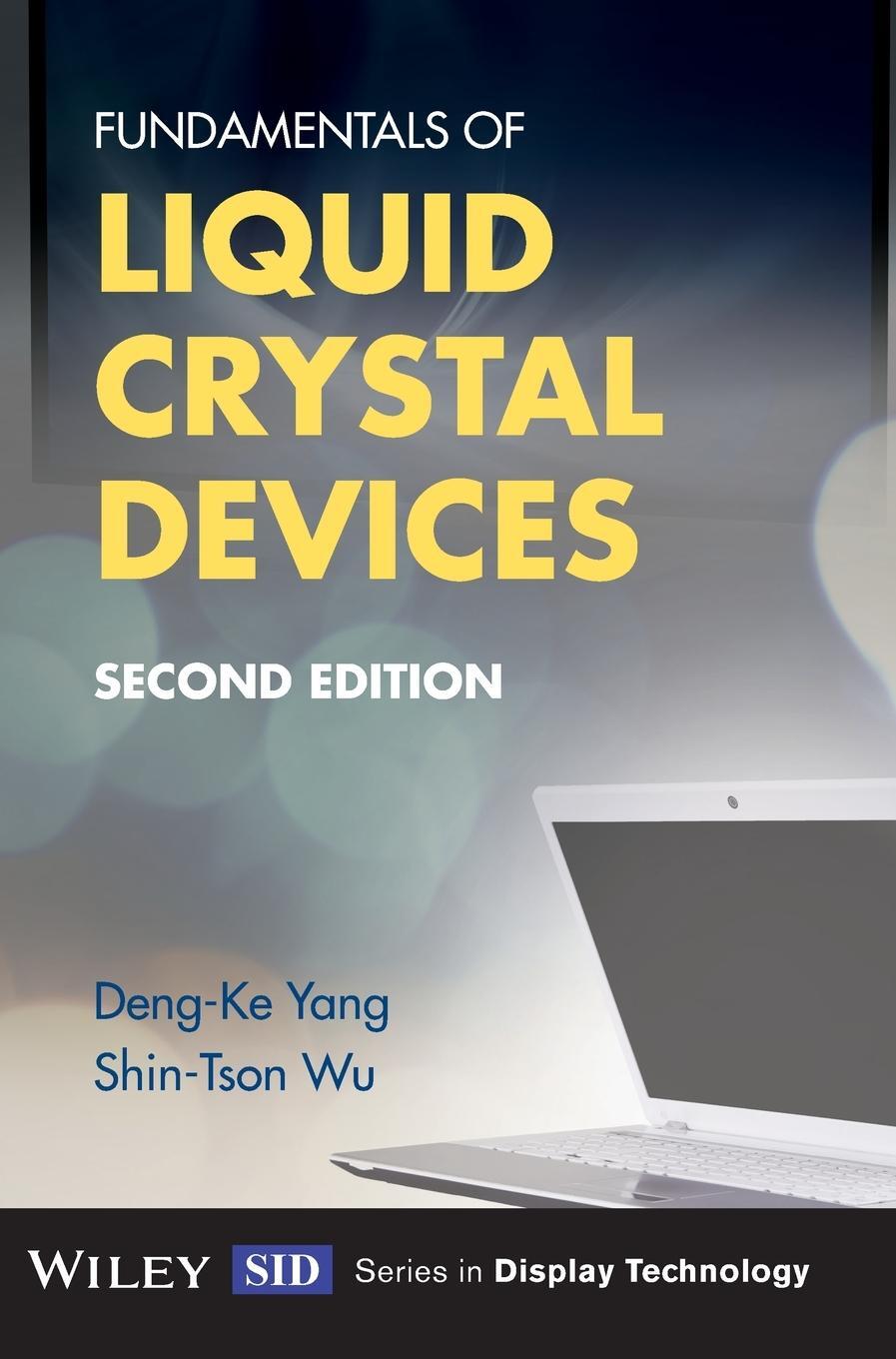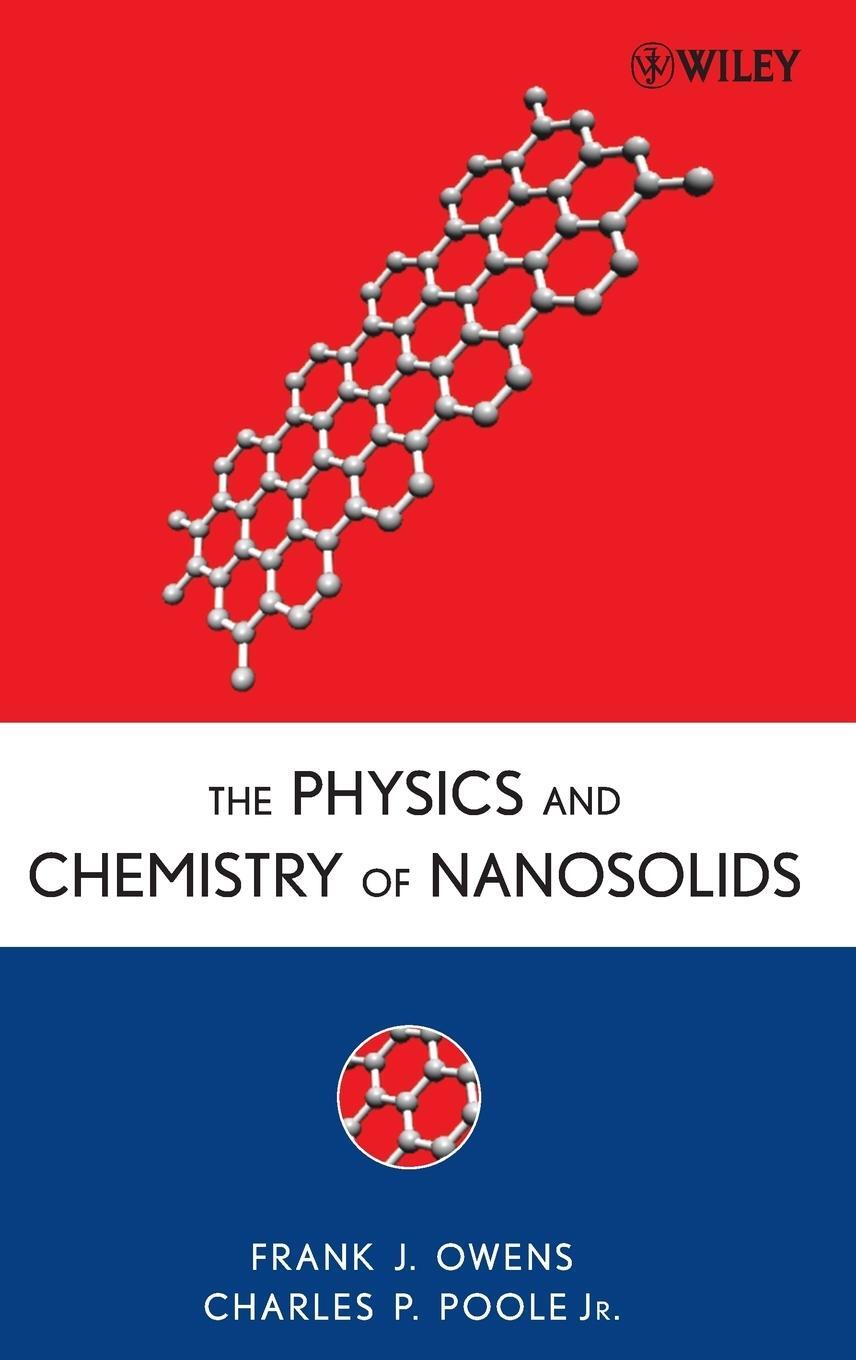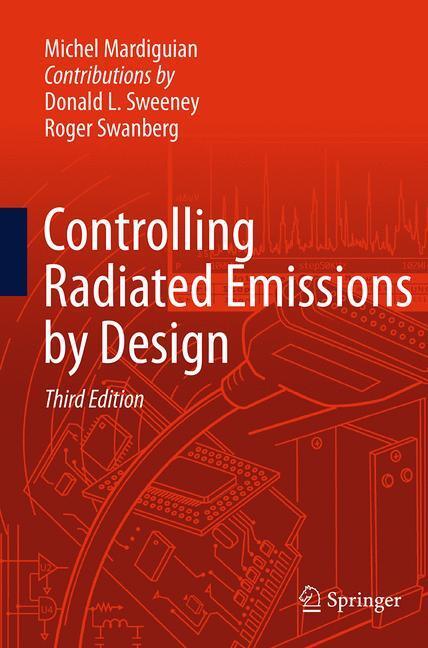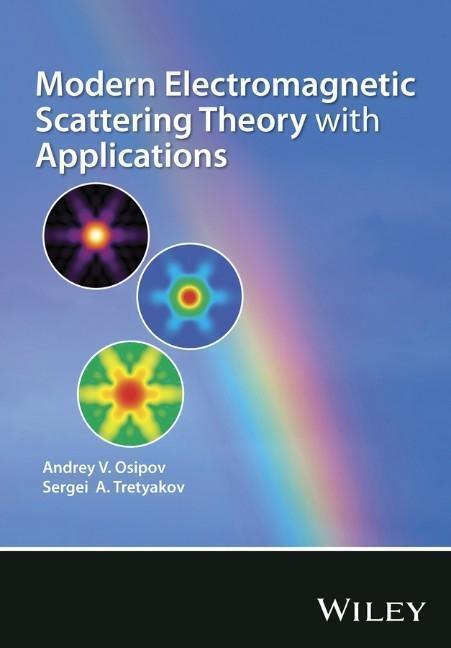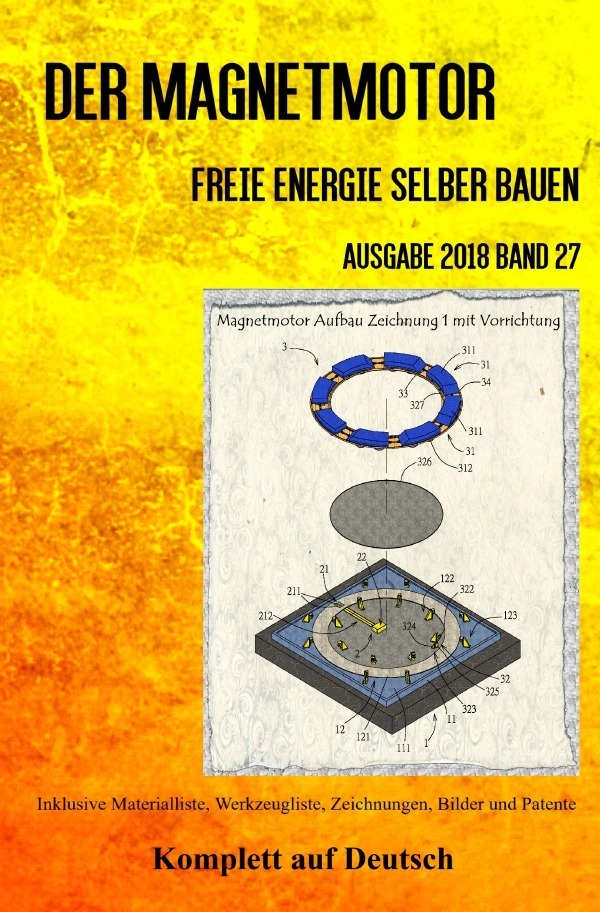Dekorationsartikel gehören nicht zum Leistungsumfang.
Sprache:
Englisch
147,50 €*
Versandkostenfrei per Post / DHL
Aktuell nicht verfügbar
Kategorien:
Beschreibung
Liquid Crystal Devices are crucial and ubiquitous components of an ever-increasing number of technologies. They are used in everything from cellular phones, eBook readers, GPS devices, computer monitors and automotive displays to projectors and TVs, to name but a few. This second edition continues to serve as an introductory guide to the fundamental properties of liquid crystals and their technical application, while explicating the recent advancements within LCD technology. This edition includes important new chapters on blue-phase display technology, advancements in LCD research significantly contributed to by the authors themselves.
This title is of particular interest to engineers and researchers involved in display technology and graduate students involved in display technology research.
* Key features:
Updated throughout to reflect the latest technical state-of-the-art in LCD research and development, including new chapters and material on topics such as the properties of blue-phase liquid crystal displays and 3D liquid crystal displays;
* Explains the link between the fundamental scientific principles behind liquid crystal technology and their application to photonic devices and displays, providing a thorough understanding of the physics, optics, electro-optics and material aspects of Liquid Crystal Devices;
* Revised material reflecting developments in LCD technology, including updates on optical modelling methods, transmissive LCDs and tunable liquid crystal photonic devices;
* Chapters conclude with detailed homework problems to further cement an understanding of the topic.
This title is of particular interest to engineers and researchers involved in display technology and graduate students involved in display technology research.
* Key features:
Updated throughout to reflect the latest technical state-of-the-art in LCD research and development, including new chapters and material on topics such as the properties of blue-phase liquid crystal displays and 3D liquid crystal displays;
* Explains the link between the fundamental scientific principles behind liquid crystal technology and their application to photonic devices and displays, providing a thorough understanding of the physics, optics, electro-optics and material aspects of Liquid Crystal Devices;
* Revised material reflecting developments in LCD technology, including updates on optical modelling methods, transmissive LCDs and tunable liquid crystal photonic devices;
* Chapters conclude with detailed homework problems to further cement an understanding of the topic.
Liquid Crystal Devices are crucial and ubiquitous components of an ever-increasing number of technologies. They are used in everything from cellular phones, eBook readers, GPS devices, computer monitors and automotive displays to projectors and TVs, to name but a few. This second edition continues to serve as an introductory guide to the fundamental properties of liquid crystals and their technical application, while explicating the recent advancements within LCD technology. This edition includes important new chapters on blue-phase display technology, advancements in LCD research significantly contributed to by the authors themselves.
This title is of particular interest to engineers and researchers involved in display technology and graduate students involved in display technology research.
* Key features:
Updated throughout to reflect the latest technical state-of-the-art in LCD research and development, including new chapters and material on topics such as the properties of blue-phase liquid crystal displays and 3D liquid crystal displays;
* Explains the link between the fundamental scientific principles behind liquid crystal technology and their application to photonic devices and displays, providing a thorough understanding of the physics, optics, electro-optics and material aspects of Liquid Crystal Devices;
* Revised material reflecting developments in LCD technology, including updates on optical modelling methods, transmissive LCDs and tunable liquid crystal photonic devices;
* Chapters conclude with detailed homework problems to further cement an understanding of the topic.
This title is of particular interest to engineers and researchers involved in display technology and graduate students involved in display technology research.
* Key features:
Updated throughout to reflect the latest technical state-of-the-art in LCD research and development, including new chapters and material on topics such as the properties of blue-phase liquid crystal displays and 3D liquid crystal displays;
* Explains the link between the fundamental scientific principles behind liquid crystal technology and their application to photonic devices and displays, providing a thorough understanding of the physics, optics, electro-optics and material aspects of Liquid Crystal Devices;
* Revised material reflecting developments in LCD technology, including updates on optical modelling methods, transmissive LCDs and tunable liquid crystal photonic devices;
* Chapters conclude with detailed homework problems to further cement an understanding of the topic.
Über den Autor
Deng-Ke Yang Liquid Crystal Institute, Kent State University, USA
Shin-Tson Wu College of Optics and Photonics, University of Central Florida, USA
Inhaltsverzeichnis
Series Editor's Foreword xiii
Preface to the First Edition xv
Preface to the Second Edition xvii
1 Liquid Crystal Physics 1
1.1 Introduction 1
1.2 Thermodynamics and Statistical Physics 5
1.3 Orientational Order 10
1.4 Elastic Properties of Liquid Crystals 21
1.5 Response of Liquid Crystals to Electromagnetic Fields 27
1.6 Anchoring Effects of Nematic Liquid Crystal at Surfaces 38
1.7 Liquid crystal director elastic deformation 40
Homework Problems 48
References 49
2 Propagation of Light in Anisotropic Optical Media 51
2.1 Electromagnetic Wave 51
2.2 Polarization 54
2.3 Propagation of Light in Uniform Anisotropic Optical Media 59
2.4 Propagation of Light in Cholesteric Liquid Crystals 72
Homework Problems 85
References 86
3 Optical Modeling Methods 87
3.1 Jones Matrix Method 87
3.2 Mueller Matrix Method 98
3.3 Berreman 4 × 4 Method 113
Homework Problems 124
References 125
4 Effects of Electric Field on Liquid Crystals 127
4.1 Dielectric Interaction 127
4.2 Flexoelectric Effect 132
4.3 Ferroelectric Liquid Crystal 138
Homework Problems 146
References 147
5 Fréedericksz Transition 149
5.1 Calculus of Variation 149
5.2 Fréedericksz Transition: Statics 153
5.3 Measurement of Anchoring Strength 166
5.4 Measurement of Pretilt Angle 171
5.5 Fréedericksz Transition: Dynamics 175
Homework Problems 187
References 188
6 Liquid Crystal Materials 191
6.1 Introduction 191
6.2 Refractive Indices 192
6.3 Dielectric Constants 201
6.4 Rotational Viscosity 204
6.5 Elastic Constants 204
6.6 Figure-of-Merit (FoM) 205
6.7 Index Matching between Liquid Crystals and Polymers 206
Homework problems 210
References 210
7 Modeling Liquid Crystal Director Configuration 213
7.1 Electric Energy of Liquid Crystals 213
7.2 Modeling Electric Field 218
7.3 Simulation of Liquid Crystal Director Configuration 221
Homework Problems 232
References 232
8 Transmissive Liquid Crystal Displays 235
8.1 Introduction 235
8.2 Twisted Nematic (TN) Cells 236
8.3 In-Plane Switching Mode 241
8.4 Vertical Alignment Mode 263
8.5 Multi-Domain Vertical Alignment Cells 266
8.6 Optically Compensated Bend Cell 277
Homework Problems 281
References 283
9 Reflective and Transflective Liquid Crystal Displays 285
9.1 Introduction 285
9.2 Reflective Liquid Crystal Displays 286
9.3 Transflector 290
9.4 Classification of Transflective LCDs 293
9.5 Dual-Cell-Gap Transflective LCDs 312
9.6 Single-Cell-Gap Transflective LCDs 314
9.7 Performance of Transflective LCDs 314
Homework Problems 316
References 316
10 Liquid Crystal Display Matrices, Drive Schemes and Bistable Displays 321
10.1 Segmented Displays 321
10.2 Passive Matrix Displays and Drive Scheme 322
10.3 Active Matrix Displays 326
10.4 Bistable Ferroelectric LCD and Drive Scheme 330
10.5 Bistable Nematic Displays 332
10.6 Bistable Cholesteric Reflective Display 342
Homework Problems 358
References 359
11 Liquid Crystal/Polymer Composites 363
11.1 Introduction 363
11.2 Phase Separation 365
11.3 Scattering Properties of LCPCs 377
11.4 Polymer Dispersed Liquid Crystals 383
11.5 PSLCs 395
11.6 Scattering-Based Displays from LCPCs 400
11.7 Polymer-Stabilized LCDs 403
Homework Problems 407
References 409
12 Tunable Liquid Crystal Photonic Devices 413
12.1 Introduction 413
12.2 Laser Beam Steering 414
12.3 Variable Optical Attenuators 419
12.4 Tunable-Focus Lens 423
12.5 Polarization-Independent LC Devices 435
Homework Problems 441
References 442
13 Blue Phases of Chiral Liquid Crystals 445
13.1 Introduction 445
13.2 Phase Diagram of Blue Phases 446
13.3 Reflection of Blue Phases 447
13.4 Structure of Blue Phase 451
13.5 Optical Properties of Blue Phase 471
Homework Problems 475
References 475
14 Polymer-Stabilized Blue Phase Liquid Crystals 477
14.1 Introduction 477
14.2 Polymer-Stabilized Blue Phases 480
14.3 Kerr Effect 484
14.4 Device Configurations 496
14.5 Vertical Field Switching 507
14.6 Phase Modulation 510
References 510
15 Liquid Crystal Display Components 513
15.1 Introduction 513
15.2 Light Source 513
15.3 Light-guide 516
15.4 Diffuser 516
15.5 Collimation Film 518
15.6 Polarizer 519
15.7 Compensation Film 530
15.8 Color Filter 535
References 536
16 Three-Dimensional Displays 539
16.1 Introduction 539
16.2 Depth Cues 539
16.3 Stereoscopic Displays 541
16.4 Autostereoscopic Displays 546
16.5 Integral imaging 553
16.6 Holography 554
16.7 Volumetric displays 556
References 560
Index 565
Preface to the First Edition xv
Preface to the Second Edition xvii
1 Liquid Crystal Physics 1
1.1 Introduction 1
1.2 Thermodynamics and Statistical Physics 5
1.3 Orientational Order 10
1.4 Elastic Properties of Liquid Crystals 21
1.5 Response of Liquid Crystals to Electromagnetic Fields 27
1.6 Anchoring Effects of Nematic Liquid Crystal at Surfaces 38
1.7 Liquid crystal director elastic deformation 40
Homework Problems 48
References 49
2 Propagation of Light in Anisotropic Optical Media 51
2.1 Electromagnetic Wave 51
2.2 Polarization 54
2.3 Propagation of Light in Uniform Anisotropic Optical Media 59
2.4 Propagation of Light in Cholesteric Liquid Crystals 72
Homework Problems 85
References 86
3 Optical Modeling Methods 87
3.1 Jones Matrix Method 87
3.2 Mueller Matrix Method 98
3.3 Berreman 4 × 4 Method 113
Homework Problems 124
References 125
4 Effects of Electric Field on Liquid Crystals 127
4.1 Dielectric Interaction 127
4.2 Flexoelectric Effect 132
4.3 Ferroelectric Liquid Crystal 138
Homework Problems 146
References 147
5 Fréedericksz Transition 149
5.1 Calculus of Variation 149
5.2 Fréedericksz Transition: Statics 153
5.3 Measurement of Anchoring Strength 166
5.4 Measurement of Pretilt Angle 171
5.5 Fréedericksz Transition: Dynamics 175
Homework Problems 187
References 188
6 Liquid Crystal Materials 191
6.1 Introduction 191
6.2 Refractive Indices 192
6.3 Dielectric Constants 201
6.4 Rotational Viscosity 204
6.5 Elastic Constants 204
6.6 Figure-of-Merit (FoM) 205
6.7 Index Matching between Liquid Crystals and Polymers 206
Homework problems 210
References 210
7 Modeling Liquid Crystal Director Configuration 213
7.1 Electric Energy of Liquid Crystals 213
7.2 Modeling Electric Field 218
7.3 Simulation of Liquid Crystal Director Configuration 221
Homework Problems 232
References 232
8 Transmissive Liquid Crystal Displays 235
8.1 Introduction 235
8.2 Twisted Nematic (TN) Cells 236
8.3 In-Plane Switching Mode 241
8.4 Vertical Alignment Mode 263
8.5 Multi-Domain Vertical Alignment Cells 266
8.6 Optically Compensated Bend Cell 277
Homework Problems 281
References 283
9 Reflective and Transflective Liquid Crystal Displays 285
9.1 Introduction 285
9.2 Reflective Liquid Crystal Displays 286
9.3 Transflector 290
9.4 Classification of Transflective LCDs 293
9.5 Dual-Cell-Gap Transflective LCDs 312
9.6 Single-Cell-Gap Transflective LCDs 314
9.7 Performance of Transflective LCDs 314
Homework Problems 316
References 316
10 Liquid Crystal Display Matrices, Drive Schemes and Bistable Displays 321
10.1 Segmented Displays 321
10.2 Passive Matrix Displays and Drive Scheme 322
10.3 Active Matrix Displays 326
10.4 Bistable Ferroelectric LCD and Drive Scheme 330
10.5 Bistable Nematic Displays 332
10.6 Bistable Cholesteric Reflective Display 342
Homework Problems 358
References 359
11 Liquid Crystal/Polymer Composites 363
11.1 Introduction 363
11.2 Phase Separation 365
11.3 Scattering Properties of LCPCs 377
11.4 Polymer Dispersed Liquid Crystals 383
11.5 PSLCs 395
11.6 Scattering-Based Displays from LCPCs 400
11.7 Polymer-Stabilized LCDs 403
Homework Problems 407
References 409
12 Tunable Liquid Crystal Photonic Devices 413
12.1 Introduction 413
12.2 Laser Beam Steering 414
12.3 Variable Optical Attenuators 419
12.4 Tunable-Focus Lens 423
12.5 Polarization-Independent LC Devices 435
Homework Problems 441
References 442
13 Blue Phases of Chiral Liquid Crystals 445
13.1 Introduction 445
13.2 Phase Diagram of Blue Phases 446
13.3 Reflection of Blue Phases 447
13.4 Structure of Blue Phase 451
13.5 Optical Properties of Blue Phase 471
Homework Problems 475
References 475
14 Polymer-Stabilized Blue Phase Liquid Crystals 477
14.1 Introduction 477
14.2 Polymer-Stabilized Blue Phases 480
14.3 Kerr Effect 484
14.4 Device Configurations 496
14.5 Vertical Field Switching 507
14.6 Phase Modulation 510
References 510
15 Liquid Crystal Display Components 513
15.1 Introduction 513
15.2 Light Source 513
15.3 Light-guide 516
15.4 Diffuser 516
15.5 Collimation Film 518
15.6 Polarizer 519
15.7 Compensation Film 530
15.8 Color Filter 535
References 536
16 Three-Dimensional Displays 539
16.1 Introduction 539
16.2 Depth Cues 539
16.3 Stereoscopic Displays 541
16.4 Autostereoscopic Displays 546
16.5 Integral imaging 553
16.6 Holography 554
16.7 Volumetric displays 556
References 560
Index 565
Details
| Erscheinungsjahr: | 2014 |
|---|---|
| Fachbereich: | Nachrichtentechnik |
| Genre: | Technik |
| Rubrik: | Naturwissenschaften & Technik |
| Medium: | Buch |
| Seiten: | 592 |
| Inhalt: | 592 S. |
| ISBN-13: | 9781118752005 |
| ISBN-10: | 1118752007 |
| Sprache: | Englisch |
| Herstellernummer: | 1W118752000 |
| Einband: | Gebunden |
| Autor: |
Yang, Deng-Ke
Wu, Shin-Tson |
| Auflage: | 2nd Revised edition |
| Hersteller: |
Wiley
John Wiley & Sons |
| Maße: | 250 x 175 x 36 mm |
| Von/Mit: | Deng-Ke Yang (u. a.) |
| Erscheinungsdatum: | 03.12.2014 |
| Gewicht: | 1,186 kg |
Über den Autor
Deng-Ke Yang Liquid Crystal Institute, Kent State University, USA
Shin-Tson Wu College of Optics and Photonics, University of Central Florida, USA
Inhaltsverzeichnis
Series Editor's Foreword xiii
Preface to the First Edition xv
Preface to the Second Edition xvii
1 Liquid Crystal Physics 1
1.1 Introduction 1
1.2 Thermodynamics and Statistical Physics 5
1.3 Orientational Order 10
1.4 Elastic Properties of Liquid Crystals 21
1.5 Response of Liquid Crystals to Electromagnetic Fields 27
1.6 Anchoring Effects of Nematic Liquid Crystal at Surfaces 38
1.7 Liquid crystal director elastic deformation 40
Homework Problems 48
References 49
2 Propagation of Light in Anisotropic Optical Media 51
2.1 Electromagnetic Wave 51
2.2 Polarization 54
2.3 Propagation of Light in Uniform Anisotropic Optical Media 59
2.4 Propagation of Light in Cholesteric Liquid Crystals 72
Homework Problems 85
References 86
3 Optical Modeling Methods 87
3.1 Jones Matrix Method 87
3.2 Mueller Matrix Method 98
3.3 Berreman 4 × 4 Method 113
Homework Problems 124
References 125
4 Effects of Electric Field on Liquid Crystals 127
4.1 Dielectric Interaction 127
4.2 Flexoelectric Effect 132
4.3 Ferroelectric Liquid Crystal 138
Homework Problems 146
References 147
5 Fréedericksz Transition 149
5.1 Calculus of Variation 149
5.2 Fréedericksz Transition: Statics 153
5.3 Measurement of Anchoring Strength 166
5.4 Measurement of Pretilt Angle 171
5.5 Fréedericksz Transition: Dynamics 175
Homework Problems 187
References 188
6 Liquid Crystal Materials 191
6.1 Introduction 191
6.2 Refractive Indices 192
6.3 Dielectric Constants 201
6.4 Rotational Viscosity 204
6.5 Elastic Constants 204
6.6 Figure-of-Merit (FoM) 205
6.7 Index Matching between Liquid Crystals and Polymers 206
Homework problems 210
References 210
7 Modeling Liquid Crystal Director Configuration 213
7.1 Electric Energy of Liquid Crystals 213
7.2 Modeling Electric Field 218
7.3 Simulation of Liquid Crystal Director Configuration 221
Homework Problems 232
References 232
8 Transmissive Liquid Crystal Displays 235
8.1 Introduction 235
8.2 Twisted Nematic (TN) Cells 236
8.3 In-Plane Switching Mode 241
8.4 Vertical Alignment Mode 263
8.5 Multi-Domain Vertical Alignment Cells 266
8.6 Optically Compensated Bend Cell 277
Homework Problems 281
References 283
9 Reflective and Transflective Liquid Crystal Displays 285
9.1 Introduction 285
9.2 Reflective Liquid Crystal Displays 286
9.3 Transflector 290
9.4 Classification of Transflective LCDs 293
9.5 Dual-Cell-Gap Transflective LCDs 312
9.6 Single-Cell-Gap Transflective LCDs 314
9.7 Performance of Transflective LCDs 314
Homework Problems 316
References 316
10 Liquid Crystal Display Matrices, Drive Schemes and Bistable Displays 321
10.1 Segmented Displays 321
10.2 Passive Matrix Displays and Drive Scheme 322
10.3 Active Matrix Displays 326
10.4 Bistable Ferroelectric LCD and Drive Scheme 330
10.5 Bistable Nematic Displays 332
10.6 Bistable Cholesteric Reflective Display 342
Homework Problems 358
References 359
11 Liquid Crystal/Polymer Composites 363
11.1 Introduction 363
11.2 Phase Separation 365
11.3 Scattering Properties of LCPCs 377
11.4 Polymer Dispersed Liquid Crystals 383
11.5 PSLCs 395
11.6 Scattering-Based Displays from LCPCs 400
11.7 Polymer-Stabilized LCDs 403
Homework Problems 407
References 409
12 Tunable Liquid Crystal Photonic Devices 413
12.1 Introduction 413
12.2 Laser Beam Steering 414
12.3 Variable Optical Attenuators 419
12.4 Tunable-Focus Lens 423
12.5 Polarization-Independent LC Devices 435
Homework Problems 441
References 442
13 Blue Phases of Chiral Liquid Crystals 445
13.1 Introduction 445
13.2 Phase Diagram of Blue Phases 446
13.3 Reflection of Blue Phases 447
13.4 Structure of Blue Phase 451
13.5 Optical Properties of Blue Phase 471
Homework Problems 475
References 475
14 Polymer-Stabilized Blue Phase Liquid Crystals 477
14.1 Introduction 477
14.2 Polymer-Stabilized Blue Phases 480
14.3 Kerr Effect 484
14.4 Device Configurations 496
14.5 Vertical Field Switching 507
14.6 Phase Modulation 510
References 510
15 Liquid Crystal Display Components 513
15.1 Introduction 513
15.2 Light Source 513
15.3 Light-guide 516
15.4 Diffuser 516
15.5 Collimation Film 518
15.6 Polarizer 519
15.7 Compensation Film 530
15.8 Color Filter 535
References 536
16 Three-Dimensional Displays 539
16.1 Introduction 539
16.2 Depth Cues 539
16.3 Stereoscopic Displays 541
16.4 Autostereoscopic Displays 546
16.5 Integral imaging 553
16.6 Holography 554
16.7 Volumetric displays 556
References 560
Index 565
Preface to the First Edition xv
Preface to the Second Edition xvii
1 Liquid Crystal Physics 1
1.1 Introduction 1
1.2 Thermodynamics and Statistical Physics 5
1.3 Orientational Order 10
1.4 Elastic Properties of Liquid Crystals 21
1.5 Response of Liquid Crystals to Electromagnetic Fields 27
1.6 Anchoring Effects of Nematic Liquid Crystal at Surfaces 38
1.7 Liquid crystal director elastic deformation 40
Homework Problems 48
References 49
2 Propagation of Light in Anisotropic Optical Media 51
2.1 Electromagnetic Wave 51
2.2 Polarization 54
2.3 Propagation of Light in Uniform Anisotropic Optical Media 59
2.4 Propagation of Light in Cholesteric Liquid Crystals 72
Homework Problems 85
References 86
3 Optical Modeling Methods 87
3.1 Jones Matrix Method 87
3.2 Mueller Matrix Method 98
3.3 Berreman 4 × 4 Method 113
Homework Problems 124
References 125
4 Effects of Electric Field on Liquid Crystals 127
4.1 Dielectric Interaction 127
4.2 Flexoelectric Effect 132
4.3 Ferroelectric Liquid Crystal 138
Homework Problems 146
References 147
5 Fréedericksz Transition 149
5.1 Calculus of Variation 149
5.2 Fréedericksz Transition: Statics 153
5.3 Measurement of Anchoring Strength 166
5.4 Measurement of Pretilt Angle 171
5.5 Fréedericksz Transition: Dynamics 175
Homework Problems 187
References 188
6 Liquid Crystal Materials 191
6.1 Introduction 191
6.2 Refractive Indices 192
6.3 Dielectric Constants 201
6.4 Rotational Viscosity 204
6.5 Elastic Constants 204
6.6 Figure-of-Merit (FoM) 205
6.7 Index Matching between Liquid Crystals and Polymers 206
Homework problems 210
References 210
7 Modeling Liquid Crystal Director Configuration 213
7.1 Electric Energy of Liquid Crystals 213
7.2 Modeling Electric Field 218
7.3 Simulation of Liquid Crystal Director Configuration 221
Homework Problems 232
References 232
8 Transmissive Liquid Crystal Displays 235
8.1 Introduction 235
8.2 Twisted Nematic (TN) Cells 236
8.3 In-Plane Switching Mode 241
8.4 Vertical Alignment Mode 263
8.5 Multi-Domain Vertical Alignment Cells 266
8.6 Optically Compensated Bend Cell 277
Homework Problems 281
References 283
9 Reflective and Transflective Liquid Crystal Displays 285
9.1 Introduction 285
9.2 Reflective Liquid Crystal Displays 286
9.3 Transflector 290
9.4 Classification of Transflective LCDs 293
9.5 Dual-Cell-Gap Transflective LCDs 312
9.6 Single-Cell-Gap Transflective LCDs 314
9.7 Performance of Transflective LCDs 314
Homework Problems 316
References 316
10 Liquid Crystal Display Matrices, Drive Schemes and Bistable Displays 321
10.1 Segmented Displays 321
10.2 Passive Matrix Displays and Drive Scheme 322
10.3 Active Matrix Displays 326
10.4 Bistable Ferroelectric LCD and Drive Scheme 330
10.5 Bistable Nematic Displays 332
10.6 Bistable Cholesteric Reflective Display 342
Homework Problems 358
References 359
11 Liquid Crystal/Polymer Composites 363
11.1 Introduction 363
11.2 Phase Separation 365
11.3 Scattering Properties of LCPCs 377
11.4 Polymer Dispersed Liquid Crystals 383
11.5 PSLCs 395
11.6 Scattering-Based Displays from LCPCs 400
11.7 Polymer-Stabilized LCDs 403
Homework Problems 407
References 409
12 Tunable Liquid Crystal Photonic Devices 413
12.1 Introduction 413
12.2 Laser Beam Steering 414
12.3 Variable Optical Attenuators 419
12.4 Tunable-Focus Lens 423
12.5 Polarization-Independent LC Devices 435
Homework Problems 441
References 442
13 Blue Phases of Chiral Liquid Crystals 445
13.1 Introduction 445
13.2 Phase Diagram of Blue Phases 446
13.3 Reflection of Blue Phases 447
13.4 Structure of Blue Phase 451
13.5 Optical Properties of Blue Phase 471
Homework Problems 475
References 475
14 Polymer-Stabilized Blue Phase Liquid Crystals 477
14.1 Introduction 477
14.2 Polymer-Stabilized Blue Phases 480
14.3 Kerr Effect 484
14.4 Device Configurations 496
14.5 Vertical Field Switching 507
14.6 Phase Modulation 510
References 510
15 Liquid Crystal Display Components 513
15.1 Introduction 513
15.2 Light Source 513
15.3 Light-guide 516
15.4 Diffuser 516
15.5 Collimation Film 518
15.6 Polarizer 519
15.7 Compensation Film 530
15.8 Color Filter 535
References 536
16 Three-Dimensional Displays 539
16.1 Introduction 539
16.2 Depth Cues 539
16.3 Stereoscopic Displays 541
16.4 Autostereoscopic Displays 546
16.5 Integral imaging 553
16.6 Holography 554
16.7 Volumetric displays 556
References 560
Index 565
Details
| Erscheinungsjahr: | 2014 |
|---|---|
| Fachbereich: | Nachrichtentechnik |
| Genre: | Technik |
| Rubrik: | Naturwissenschaften & Technik |
| Medium: | Buch |
| Seiten: | 592 |
| Inhalt: | 592 S. |
| ISBN-13: | 9781118752005 |
| ISBN-10: | 1118752007 |
| Sprache: | Englisch |
| Herstellernummer: | 1W118752000 |
| Einband: | Gebunden |
| Autor: |
Yang, Deng-Ke
Wu, Shin-Tson |
| Auflage: | 2nd Revised edition |
| Hersteller: |
Wiley
John Wiley & Sons |
| Maße: | 250 x 175 x 36 mm |
| Von/Mit: | Deng-Ke Yang (u. a.) |
| Erscheinungsdatum: | 03.12.2014 |
| Gewicht: | 1,186 kg |
Warnhinweis

